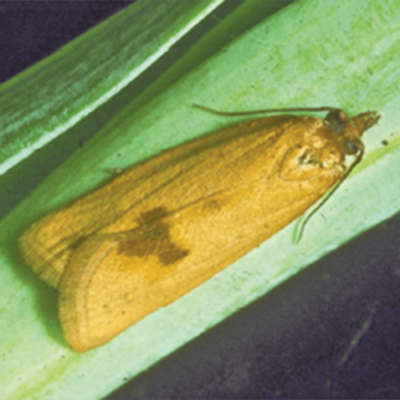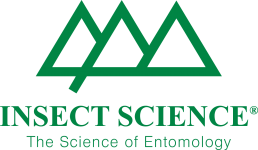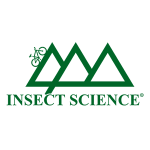Host plants
Larvae of E. acerbella are polyphagous and have been reported feeding on plants in more than a dozen families. On fruit, pear leaf roller has been recorded on apple, pear, peach, plum, grape and persimmon. Strawberry is also a host. It is an important pest of carnations and other flowers, including species of the families Asteraceae, Liliaceae and Rosaceae. Other hosts include many wild plants and orchard weeds such as wild radish, , Rumex acetocella (Polygonaceae); sorrel species, Oxalis spp. (Oxalidaceae); small mallow, Malva parviflora (Malvaceae); sow thistle, Sonchus oleraceus (Asteraceae); banana passionfruit, Passiflora mollissima (Passifloraceae); tickberry or bietou, Chrysanthemoides monilifera (Asterceae) and Cape weed, Cryptostemma spp. (Calendulaceae).
Damage
Pear leaf roller is primarily a leaf feeder, particularly on the young terminal leaves of shoots. It binds one or more young terminal leaves together with silk threads into a roll, hence the name leaf roller. Economic damage on pears can occur as early as November. The larva spins leaves to the fruit to create a protective canopy, under which it feeds on the surface of the fruit. Larvae chew away shallow patches of the cuticle, leaving a margin with a scalloped appearance. As the fruit matures it forms thin, corky-like callus tissue over the damaged area that may later flake off. Damage at a later stage of the fruit development is generally deeper and the corky callus remains intact. The calyx end of the fruit is often preferred although deeper damage occasionally occurs at the stalk end. The presence of fine webbing over the fruit surface distinguishes pear leaf roller damage from similar damage cause by other insects, except the apple leaf roller, Lozotaenia capensana, which causes the same type of damage on fruit. On flowers, larvae feed in flower buds, on flower petals, in rolled leaves, and may also tunnel into stems.
In the early 1960s, prior to the introduction of DDT against codling moth, pear leaf roller was not considered a pest of economic importance and was kept in check by a complex of natural enemies. After several years of DDT use when natural enemy populations were disrupted, fruit damage by this pest of up to 30% was recorded. When DDT was banned, leaf roller populations again began to decline, and by the late 1970s populations had reached almost non-detectable levels. Populations in deciduous fruit orchards have remained low ever since, with negligible fruit damage, seldom requiring control actions. This is attributed to improved integrated pest management strategies that have allowed the many natural enemies that attack the eggs, larvae and pupae to survive in orchards.
Life history
The adults are nocturnal, laying their eggs on the leaves of the host plant. Eggs hatch in 7-10 days and there are apparently 5-6 larval instars. In fruit orchards, breeding takes place throughout the year on weeds and infestation of fruit trees only occurs during the growing season. Adult populations start to increase from August and reach a peak between the end of October and early November, when most fruit damage takes place. Populations decrease during December and January and reach another peak between February and March. When mature, the larvae drop to the soil, where they pupate. The pear leaf roller can complete four generations per year in warmer climates.
Natural enemies
The pear leaf roller is attacked by a complex of parasitic wasps belonging to the genera Apanteles and Cotesia (Braconidae), Goniozus (Bethylidae), Pristomerus (Ichneumonidae), Brachymeria (Chalcididae), Chlorocytus (Pteromalidae) and Pediobuis and Elachertus (Eulophidae).
Management
The above-mentioned complex of natural enemies and the increased use of more environmentally-compatible insecticides on fruit have resulted in only very minor and sporadic incidents of infestation in individual pear orchards. When necessary, regular monitoring of the shoot tips and the fruit clusters from the petal-fall stage should detect the presence of pear leaf roller larvae or feeding damage, allowing pest management actions to be adapted accordingly. Should chemical control be necessary, an appropriate insecticide applied during peak moth activity will control populations. However, care should be taken to avoid disruption of natural enemy populations.






